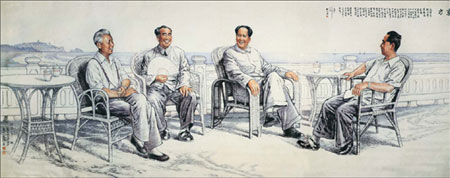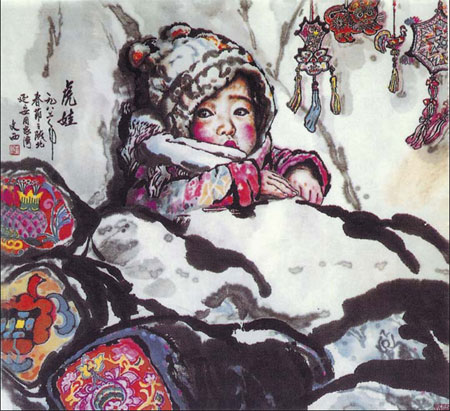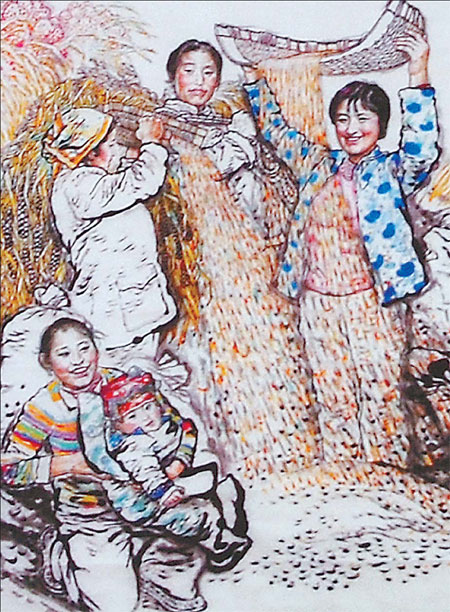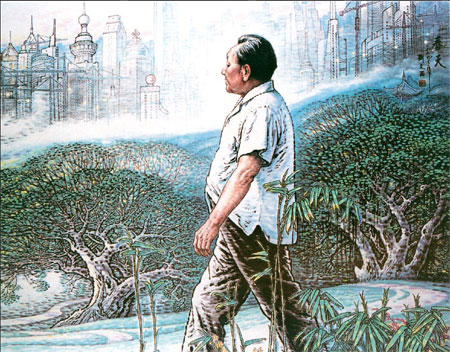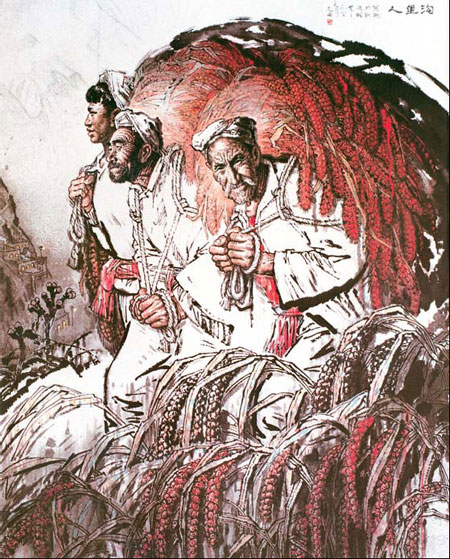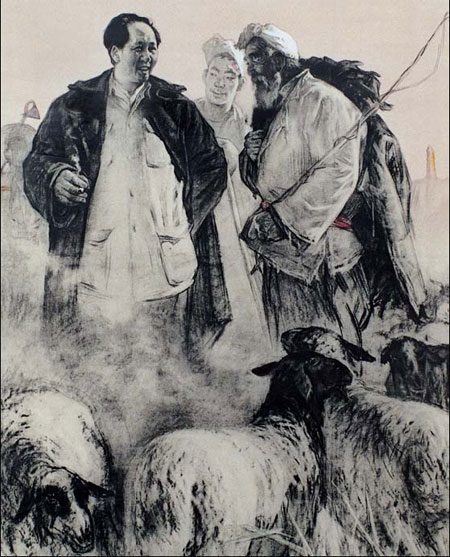Brush with history
Updated: 2013-04-26 08:41
By Zhuan Ti (China Daily)
|
|||||||||||
|
The Oriental (the four founding fathers of New China - Liu Shaoqi, Zhu De, Mao Zedong and Zhou Enlai), 270x780cm, 1993. Photos Provided to China Daily |
|
Child, 100x100cm, 1986. |
|
Women in Mizhi (detail), 210x600cm, 2009. |
Liu Wenxi's art is known to everyone in China - it's on the currency Notes
"I have a piece of work that 1.3 billion people have seen," Liu Wenxi says with a smile.
The octogenarian former vice-president of China Artists Association and dean emeritus of Xi'an Academy of Fine Arts, is perhaps best known for painting portraits of Chairman Mao Zedong, the founding father of the People's Republic of China.
One of the portraits is now printed on the renminbi, the nation's currency.
Born in a small village in Zhejiang province in 1933, Liu demonstrated his talent for art from a very young age.
But it wasn't until he went to the county school that he first heard the name of Leonardo da Vinci, the legendary artist of the Italian Renaissance.
Vinci sounds similar to Wenxi in Chinese.
"Then I thought, since we are both called 'wenxi', why couldn't I become an artist?" he recalls.
Liu's artist dream received a huge boost after his uncle introduced him to Chen Wangdao, then president of Fudan University in Shanghai.
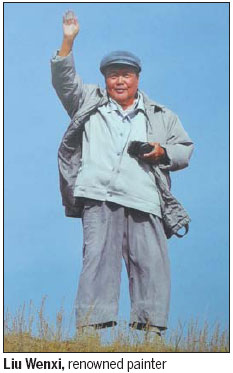
Chen was impressed by Liu's talent after Liu painted a portrait for him on the spot, and recommended him to Yucai Middle School.
The school was founded by renowned Chinese educator Tao Xingzhi and was known for nurturing students with artistic talent.
Studies at Yucai left an indelible impact on his life, says Liu.
During this period, Liu saw large numbers of Mao Zedong photos and that paved the way for his future creations.
After graduation, he volunteered to work in Yan'an in Shaanxi province, an important revolutionary base for the Communist Party of China.
The harsh living conditions in Yan'an provided invaluable experience for him, strengthening his will and enriching his life.
"Painters do not consider places for enjoyment. I want to explore human nature through all the hardship," he says.
During his life in Yan'an, Liu collected many vivid stories about Mao through his talks with local villagers.
One of his most famous paintings - Chairman Mao and the Shepherd - was created during the period.
Since then, Liu has spent most of his energy studying the appearance and manners of Mao at different times and has painted his portrait thousands of times.
His enthusiasm has even affected his daily life. He wears a light gray suit wherever he goes because Mao wore the same style clothes when he was in Yan'an.
"He just loves the suit. He is reluctant to try on any other clothes," says Chen Guangjian, Liu's wife.
In 1997, when Liu was attending the National People's Congress in Beijing, officials from China Banknote Printing and Minting Corp, which is in charge of printing money, approached him and asked him to paint a portrait of Chairman Mao for the new set of renminbi.
Liu gladly took on the task and came up with the piece that is now everywhere in China.
Though he now suffers from serious arthritis, Liu said he still paints every day.
"Even until today, I still want to paint Chairman Mao," he says. "I will never be tired of painting him."
zhuanti@chinadaily.com.cn
|
Spring (detail), 210x200cm, 1999. |
|
Villagers (detail), 140x170cm, 1986. |
|
Chairman Mao and Shepherd, 200x170cm, 1958-62. |
(China Daily 04/26/2013 page24)
Today's Top News
List of approved GM food clarified
ID checks for express deliveries in Guangdong
Govt to expand elderly care
University asks freshmen to sign suicide disclaimer
Tibet gears up for new climbing season
Media asked to promote Sino-Indian ties
Shots fired at Washington Navy Yard
Minimum growth rate set at 7%
Hot Topics
Lunar probe , China growth forecasts, Emission rules get tougher, China seen through 'colored lens', International board,
Editor's Picks

|

|

|

|

|

|
